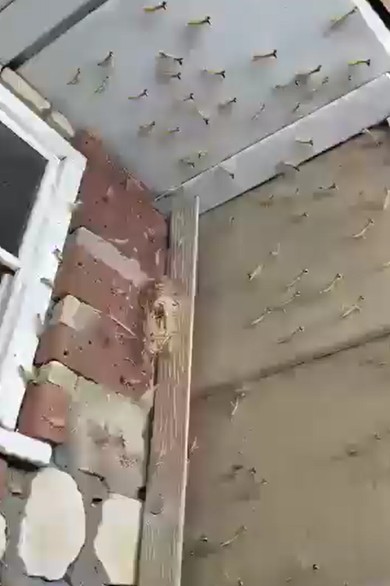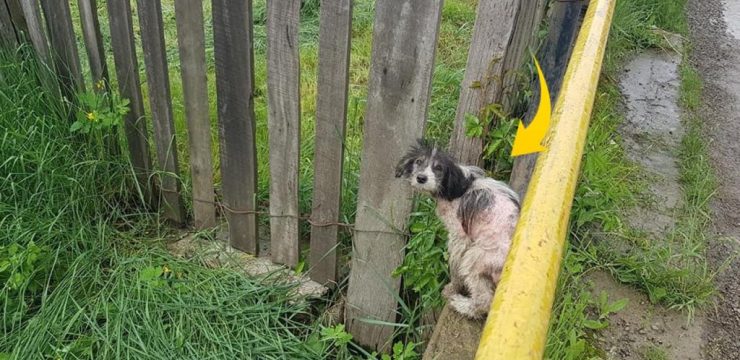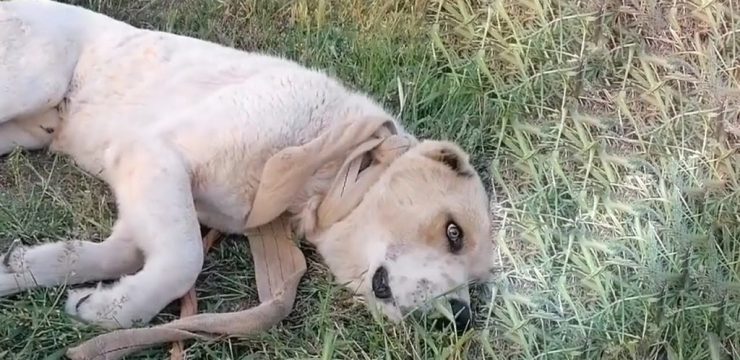It started one quiet morning with something so small, most people would have missed it entirely — a tiny miracle unfolding just outside my front door. At first, I noticed what looked like a strange, hardened lump attached to the side of a wooden post. I’d seen it before during the colder months, a curious little case that often went unnoticed. But this time, as the sunlight warmed its surface, it began to move. Within moments, dozens of minute, translucent shapes began to emerge — a cluster of praying mantises, each no larger than the tip of my pinky finger, stepping into the world for the very first time.

Watching them crawl from their delicate egg case, known as an ootheca, felt like witnessing a secret ceremony of nature. The entire process seemed impossibly fragile yet deeply purposeful. One by one, the newborn mantises stretched their tiny limbs, drying in the sun, their delicate bodies glimmering like glass. In that moment, I felt as if a miniature universe had opened right before my eyes — one filled with precision, order, and quiet beauty.
Though these hatchlings are barely visible, they are designed to survive. They emerge without wings, depending solely on their nimble bodies, instincts, and sheer determination to make it through their first days. They climb walls, leaves, and stems with remarkable agility, exploring their new surroundings as though guided by some innate wisdom. Despite their size, there’s an unmistakable grace in how they move — a sense of control that feels almost meditative. Every twitch of their legs, every turn of their head seems deliberate, measured, and mindful.
Even at such a small scale, their predatory nature is clear. Within hours, they begin to hunt tiny insects like flies, gnats, and mosquitoes. What’s fascinating is that their movements are never frantic. Instead, each motion seems to flow with purpose. It’s as if they understand something most of us forget in the rush of daily life — that true strength often lies in stillness and observation.
Standing there, watching these fragile creatures navigate the world, I found myself unexpectedly moved. They didn’t rush or panic. They didn’t fight against their size or their limitations. Instead, they simply were — alert, calm, and aware. In many cultures, the praying mantis represents stillness, patience, and clarity. Its very posture — front legs raised as if in prayer — reminds us of meditation, of a deep connection between motion and mindfulness. And as I watched them, that symbolism felt real, not abstract.
Each tiny mantis became a teacher in its own way. Their near-360° vision allows them to see the world from almost every angle, a reminder that perspective matters. Their lightning-fast strikes, used to catch prey, happen only after long moments of waiting — teaching that patience isn’t about doing nothing, but about acting at the right moment. Their movements embody balance, both literally and spiritually, showing how precision and presence can coexist beautifully.
It’s easy to overlook something so small. Most of us step over insects without a thought. Yet, when you pause long enough to notice, you realize how much life hums quietly around us — constant, complex, and deeply interconnected. Nature has its own rhythm, and everything, even the tiniest creature, has a purpose within it. Watching those mantises reminded me how easy it is to forget that truth in our technology-driven world, where distractions pull us away from the details that make life meaningful.
As they continued exploring, climbing higher on the plants near my doorway, I began to understand that life’s lessons often arrive in unexpected forms. These newborns weren’t just insects struggling to survive — they were examples of courage, focus, and adaptability. Every delicate step they took carried a silent message: progress doesn’t always come with noise or drama. Sometimes it arrives quietly, through persistence and awareness.
Over the next few hours, many of the mantises disappeared into the garden. Some would thrive, while others would fall prey to birds or the elements. Their lives would be brief, but that brevity didn’t diminish their value. In fact, it made their existence even more poignant. The world often celebrates what’s big, fast, or loud, yet it’s the small, almost invisible acts of life that reveal the true depth of resilience.
I couldn’t help but think about how much we can learn from them. In a society that glorifies speed and constant motion, the praying mantis lives in deliberate slowness. It waits, observes, and acts only when the time is right. Its patience is not passive — it’s an active form of awareness, a readiness to move with precision and intention. That kind of mindfulness is something humans strive to achieve through meditation and reflection, yet these creatures are born living it naturally.
There’s also something humbling about realizing that even the smallest life form plays a role in keeping balance in nature. These mantises help control pests in the garden, protecting plants without needing chemicals or human interference. In their own quiet way, they sustain the ecosystem that sustains us. They don’t take more than they need, and they exist in harmony with everything around them.
That day, as the last of the tiny mantises vanished among the leaves, I stood for a long time just thinking. The morning had given me more than just a glimpse of nature — it had offered a reminder. Meaning doesn’t always shout; sometimes it whispers through the soft click of insect legs or the stillness of a sunlit branch. Life’s wonders aren’t always grand or obvious. Often, they unfold in moments so gentle that only a patient heart can recognize them.
In their short and delicate lives, praying mantises embody the essence of mindfulness. They remind us to slow down, to pay attention, to find purpose in observation and value in presence. Their quiet strength teaches that focus and patience aren’t signs of weakness but of wisdom — the kind that grows when we stop rushing and start truly seeing.
So, the next time life feels overwhelming or chaotic, remember the mantis — small yet mighty, fragile yet fierce. It doesn’t fight the pace of the world; it moves in tune with it. And maybe that’s the lesson we all need most: that even the tiniest life carries immense meaning, if only we take the time to notice.





